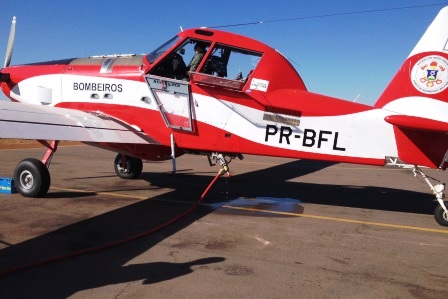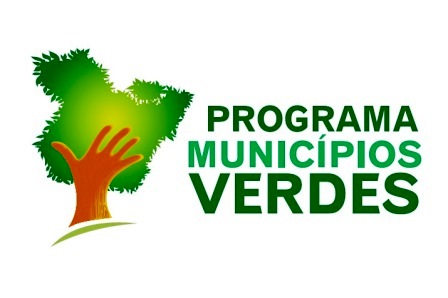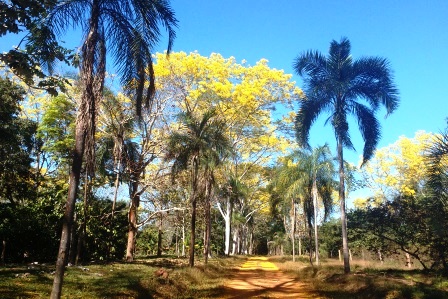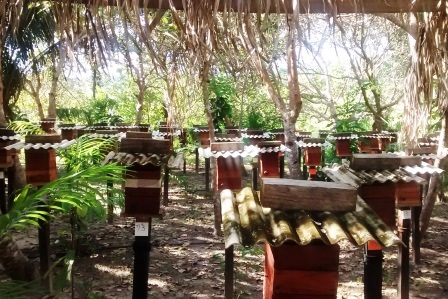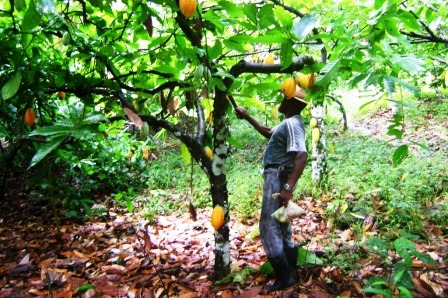ACTIVITIES CONDUCTED
The implementation of the project was structured from two axes, namely: (i) integrated territorial management and (ii) promotion and incentives to agroforestry production chains and environmental services.
I - Integrated Territorial Management: The actions carried out under this axis of the project aimed to structure the government of the state of Acre to carry out support and inspection activities, strengthening the technical bases of the territorial management institutions of the state government, such as the Central Unit of Remote Geoprocessing and Sensing (UCEGEO), the Institute of Environment of Acre (IMAC), in addition to the Secretariat of Forest Development, Industry, Trade and Sustainable Services (SEDENS). The project also supported the structuring of municipalities and their integration into the Acre Deforestation Prevention and Control Plan (PPCD-AC).
The investments aimed at the modernization of UCEGEO established conditions for it to store, integrate and manage the database generated within the scope of the EEZ of the state of Acre, with a focus on monitoring deforestation and fires. Software licenses for digital processing of satellite data and images were acquired, as well as information technology and furniture equipment.
The geotechnology training of 30 UCGEO employees was carried out to improve the analysis of high-resolution satellite and radar images, using tools such as Envi, Eedas ArcGis and PostGree.
Investments to strengthen the IMAC, in turn, enabled the modernization of environmental control in licensing, monitoring and inspection activities. With the support of the project was carried out the renovation of the headquarters of IMAC and acquired furniture, air conditioners, computers, servers and memory for servers, nobreaks, notebooks and vehicles.
New modules were developed through consulting within the State Environmental Information System (SEIAM), such as the Water Resources Granting Module and the Consultation Module to the Licensing System for the External Public.
Investments were made focused on improving the management of forest resources in the state of Acre and for the institutional strengthening of SEDENS, through the acquisition by this Secretariat of machinery, equipment, software, furniture and vehicles. In this context, the VAAF project supported the Forest Residency Program that allowed the training of 38 forest engineers, through a postgraduate degree (lato sensu) in Forest Management from the Federal University of Paraná (UFPR) in partnership with the Federal University of Acre (UFAC), aimed at the sustainable use of native forest resources.
Actions aimed at strengthening municipal environmental management included support for the creation of Municipal Environmental Councils, as well as the structuring and physical adaptation of Municipal Environmental Secretariats, through the acquisition of various equipment, such as computer and 4x4 vehicles.
Community forest fire brigades were structured by providing fire-fighting kits, including the training of 1,054 firefighters. In addition, 18 participatory workshops were held to prevent and control deforestation and fires.
The project also supported the formulation of Municipal Plans for the Prevention and Control of Deforestation and Burns of all the municipalities that make up the state of Acre, with the objective of promoting effective reductions in deforestation rates, burning and the consolidation of alternatives to the use of fire.
In order to promote the territorial planning of the municipalities of the state of Acre, several activities were developed, including the formulation of the Local Territorial Planning (OTL) plans of three municipalities (Manoel Urbano, Feijó and Plácido de Castro). The OTL is a territorial planning tool that takes into account, among others, the socio-environmental characteristics of the municipality and aims to guide the use of its territory, seeking the best occupation of space.
To structure the early warning system for droughts and floods, 46 hydrometeorological data collection platforms (PCDs) were installed and maintained, which transmit data via satellite on river flow and environmental risks, four of which were acquired with resources from the Amazon Fund and the others provided by the National Water Agency (ANA).
The project also promoted the training of employees of the Secretariat of Environment of Acre (SEMA) in the use of geotechnology and geoprocessing resources.
The aforementioned activities, implemented under the “Integrated Territorial Management” axis of the project, contributed especially to structure the government of the state of Acre and municipal governments to develop actions to prevent, monitor and combat deforestation.
II - Promotion and incentives to agroforestry production chains and environmental services: The actions carried out under this axis of the project encouraged, in turn, the provision of environmental services, through actions to consolidate sustainable productive practices associated with endangered forests; support for the forest management of timber and non-timber products and carbon sequestration via reforestation of degraded areas.
Under this axis, technical assistance and rural extension services (ATER) were provided to family farmers and extractivists involved in community forest management. These services were outsourced by the government of the state of Acre and included, among other activities, technical visits to small producers, exchanges and training. 2,361 families were benefited, located mainly around BR-364, in the municipalities of Bujari, Sena Madureira, Manoel Urbano, Feijó and Tarauacá.
The implementation of agroforestry systems (AFSs) and the development of management plans for multiple use of certified production forests were supported. Among other activities, the forest inventory of the state forest complex of the Gregório River (State Forests of the Liberdade River, Mahogany and Gregório River) was implemented.
This particular activity is part of the strategy of promoting the sustainable economic use of public forests through forest concessions. In the forest concession, a company (or productive association) receives authorization from the government to exploit, through sustainable forest management practices, the products of a public forest for a certain time and through the payment to the government of a financial value.
For the implementation of SAFs, small family producers were provided with agricultural equipment, inputs (seedlings and seeds) and small animals (free-range chickens), in addition to being provided with deburring and mechanized harrowing services.
The project paid bonuses to 2,198 families of small producers who have certified properties, according to the criteria of the Production Units Certification Program, based on State Law No. 2,025/2008, with the objective of encouraging the reduction of emissions from deforestation in areas of threatened forests.
In addition, a bonus was paid for the reduction of emissions from deforestation for 953 families living in public forests that participate in the Community Forest Management Program of the State of Acre.
The project promoted the training of indigenous associations for the preparation of management plans on indigenous lands (TIs) and the formation of surveillance teams, in addition to supporting the implementation of surveillance actions, the physical marking of the limits of these lands and the construction of surveillance posts in the TIs.
14 Workshops on Surveillance and Inspection of Indigenous Lands were carried out , training 360 indigenous people for monitoring and protection activities against invasions and forest fires, including knowledge on the themes of environmental legislation, use of GPS and preparation of surveillance plans.
In addition to the construction of surveillance posts in the ILs, equipment and support material were acquired, such as boats and boat motors, personal protective materials, opening of bites and camping steering wheel.
Finally, the installation of the “Biofábrica - Laboratório de Melhoramento Genético e Clones do Viveiro da Floresta” was supported. This initiative was the result of a partnership between the Brazilian Agricultural Research Corporation (Embrapa) and the government of the state of Acre, and the project delivered a laboratory equipped and in operation.



